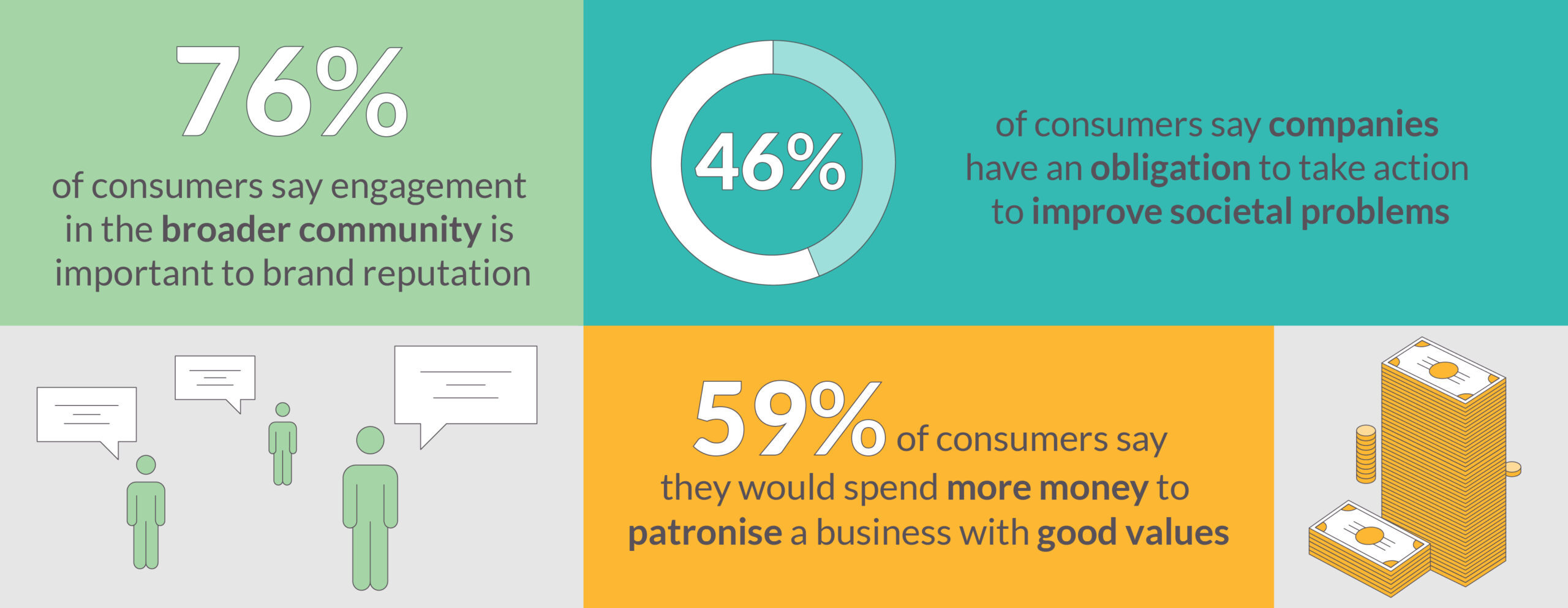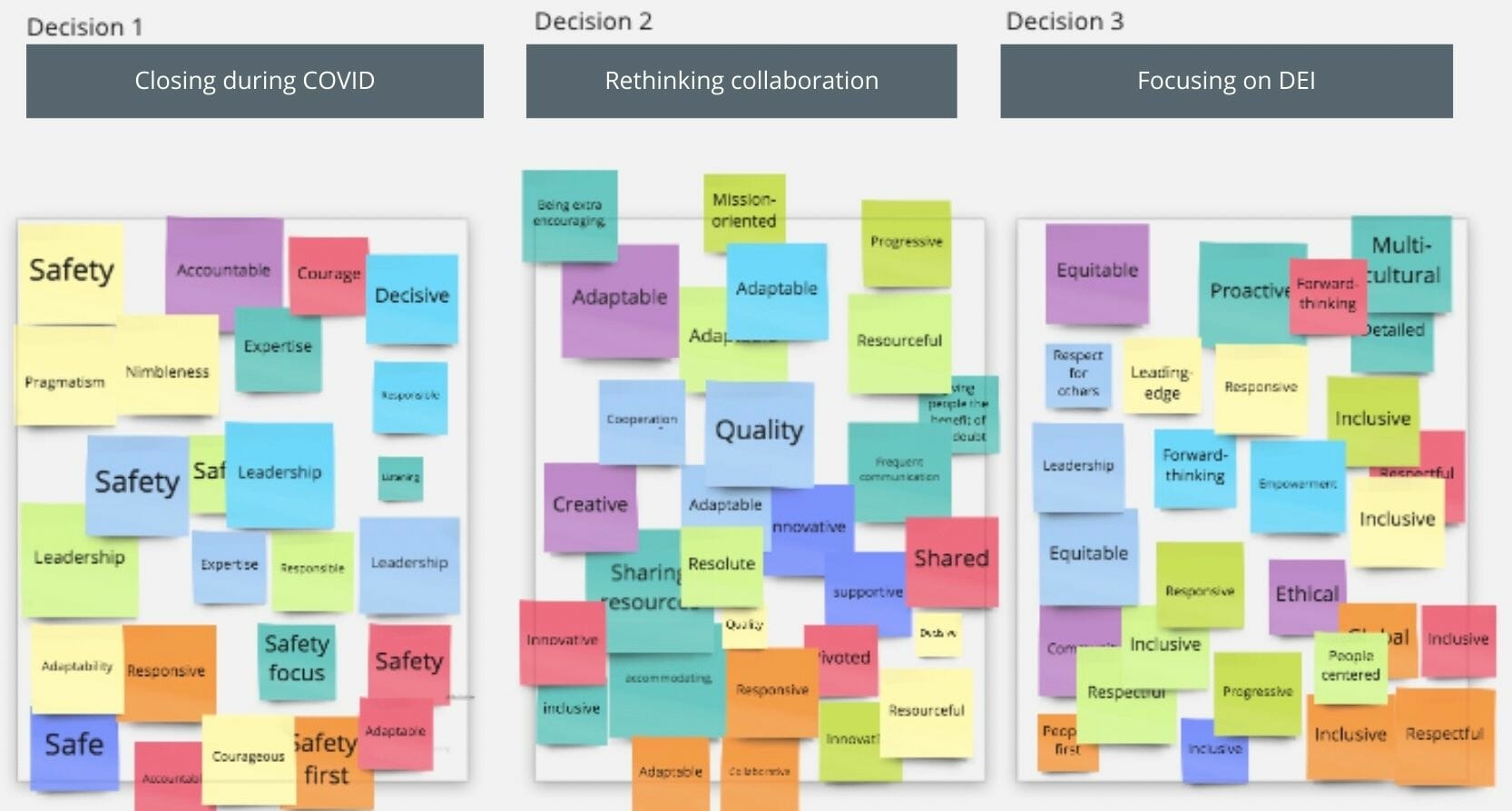I have worked with a few nonprofit organizations over the past decade, and I've seen firsthand how outdated most nonprofit marketing tactics are today. Too often we rely on interrupting people with direct mail or calling them out of the blue to ask for money. Not only is this annoying for potential supporters — it just doesn't work anymore.
What does work is sharing stories that tap into the deeper human meaning and purpose behind the cause. As we'll explore in this post, purpose-driven marketing that ignites people's passion and aligns them with your core mission is crucial for making an impact in the 21st century nonprofit landscape.
By showcasing the roots of your founding story, spotlighting the values that inform your work, and mastering emotional storytelling across platforms, you can build an army of supporters who engage with and advocate for your nonprofit.
Ready to learn more about driving results through purpose-led marketing? Let's dive in.
Why Traditional Nonprofit Marketing Falls Short
For decades, nonprofits have relied on traditional marketing tactics like:
- Direct mail campaigns
- Renting cold donor lists
- Newspaper and radio ads
- Generic messaging about the problem they're trying to solve

However, these traditional tactics have significant drawbacks:
- Lack personalization - Messaging is broad and fails to make an emotional connection with supporters.
- No storytelling - Focuses exclusively on raising money rather than sharing stories about the organization's impact.
- Interrupts people - Tactics like direct mail and cold calls interrupt and annoy potential supporters.
- Feels sales-y - Tactics are aggressive about soliciting donations rather than building relationships.
Perhaps most importantly, traditional nonprofit marketing fails to communicate the meaning behind the mission. It talks about the what and how but not the why.
Without sharing the purpose behind the work, traditional marketing struggles to attract long-term supporters who are deeply aligned with the organization's goals.

The Power of Purpose-Driven Marketing
Purpose-driven marketing flips the old nonprofit marketing funnel on its head. Instead of starting with a broad pool of “targets” and trying to extract donations, it starts by attracting people who are already aligned with the organization's purpose.

Purpose-driven marketing works because:
- Storytelling builds emotional connection - Stories showing the impact of the nonprofit's work help supporters connect with the mission on a personal, emotional level.
- Shared values drive long-term support - Supporters who share the nonprofit's core values are more likely to become loyal, passionate advocates over time.
- Purpose attracts talent and partners - A clear sense of purpose not only attracts donors, but also talented employees, board members and corporate partners who want to contribute their skills and resources.
Essentially, effective nonprofit marketing shows potential supporters why the organization exists and gives them the chance to connect with that purpose.

Here are a few examples of nonprofits running effective purpose-driven marketing:
Charity: Water
- Focuses its messaging and stories on the meaning behind its work - bringing clean water to developing countries.
- Content strategy consistently connects donors back to the “why”.
- Attracts monthly donors who are aligned with their mission for the long haul.
Team Rubicon
- Features veterans serving communities in need after natural disasters.
- Shows supporters how they can continue serving others even after their military service.
- Appeals to shared purpose and service attracts long-term volunteers.
Alex's Lemonade Stand
- Started by 4-year-old cancer patient Alexandra Scott to raise money for childhood cancer cures.
- Compelling founding story builds emotional connection with supporters.
- A clear sense of purpose has mobilized millions of backers across multiple platforms.
The common thread is crafting marketing messaging and stories that tap into a deeper sense of purpose behind the work.
3 Keys to Purpose-Driven Nonprofit Marketing
Here are 3 key principles for nonprofit organizations looking to adopt a purpose-driven marketing approach:

1. Identify Your Origin Story
Every organization has a Creation Story - the story of why it was originally founded.
Alex's Lemonade Stand Foundation originated to help a young cancer patient raise money for treatments. Charity: Water was founded by a former nightclub promoter who was horrified by the water crisis after backpacking through Africa.
These origin stories show the original purpose behind an organization's founding and are hugely valuable for marketing.
Many nonprofits don't use their origin story effectively. Take time to explore and clearly define the original purpose that inspired your nonprofit's creation.

2. Spotlight Your Core Values
What values form the foundation for your nonprofit? What beliefs about the world inform and inspire your work?
Clearly identifying and highlighting your core values is key for purpose-driven marketing. It gives potential supporters a window into what you stand for.
For example, environmental organizations showcase values like sustainability, conservation, and respect for the planet that guide their work. Patriotic nonprofits feature values like duty, honor, and country when speaking to veterans groups or other target supporters.
Take time to elucidate the core values at the heart of your mission.

3. Share Impact Through Storytelling
At the end of the day, purpose-driven marketing comes down to showing rather than telling.
Don't just tell people you help widows and orphans in Uganda. Share the story of Sara, a young Ugandan woman able to rebuild her life after being taken in by your program for trafficked youth.
Vivid stories that put a face on the organization's impact are hugely powerful. They help supporters connect with the meaning behind the work on an emotional level.
That's why purpose-driven nonprofits:
- Feature client success stories - Showcase real individuals who were deeply impacted by their work.
- Spotlight volunteer journeys - Share the stories of volunteers and their motivations for giving back.
- Illustrate process improvements - Show how a grant allowed them to serve more people.
Stories create mental images in the minds of supporters, building empathy and emotional investment that motivates them to contribute.
Mastering storytelling across platforms like fundraising emails, social media, direct mail and more is the cornerstone of purpose-driven nonprofit marketing.

Launching a Purpose-Driven Strategy
Here is a high-level roadmap nonprofits can use to begin shifting towards purpose-driven marketing:
| Phase | Key Activities | Deliverables |
|---|---|---|
| Research | - Conduct donor interviews - Identify origin story and core values - Audit existing stories |
- Donor persona profiles - Core values statement - Story inventory |
| Messaging | - Craft purpose statement - Develop messaging guidelines |
- Purpose statement - Messaging guidelines |
| Activation | - Map content programs to funnel - Produce purpose-driven content - Develop and share stories |
- Content calendar - Impact stories - Emails, social content |
| Measurement | - Track engagement metrics - Measure supporter lifetime value - Resurvey donors |
- Dashboards - Donor LTV reports - Closed loop feedback |
While each organization's strategy will look different, this gives a high-level blueprint of key phases in executing more purpose-driven nonprofit marketing.
The research phase is about learning key information to know your current donors better and clearly identify the founding story, principles, and success stories to use in your marketing.
The messaging phase uses those insights to craft an inspiring purpose statement and messaging principles that guide communication.
In the activation phase, the purpose messaging gets baked into key content used to attract and engage donors across channels based on their stage in the funnel.
Finally, the measurement phase loop backs around to survey donors, assess effectiveness and continually optimize the strategy based on supporter feedback and data.
Takeaways
Nonprofit marketing has relied on blunt, ineffective tactics for too long. Spraying and praying with direct mail or buying cold donor lists simply doesn't work anymore.
What does work is purpose-driven marketing - marketing designed to connect potential supporters to the deeper human meaning behind your mission?
By showcasing your origin story, clarifying your core values and mastering storytelling, you can create purpose-driven campaigns that attract donors, volunteers, and partners who convert into passionate evangelists for your nonprofit.
Those who embody their purpose will pull farther away from the pack and build tribes of loyal supporters who go the extra mile. Is your nonprofit ready to become more purpose-driven?






